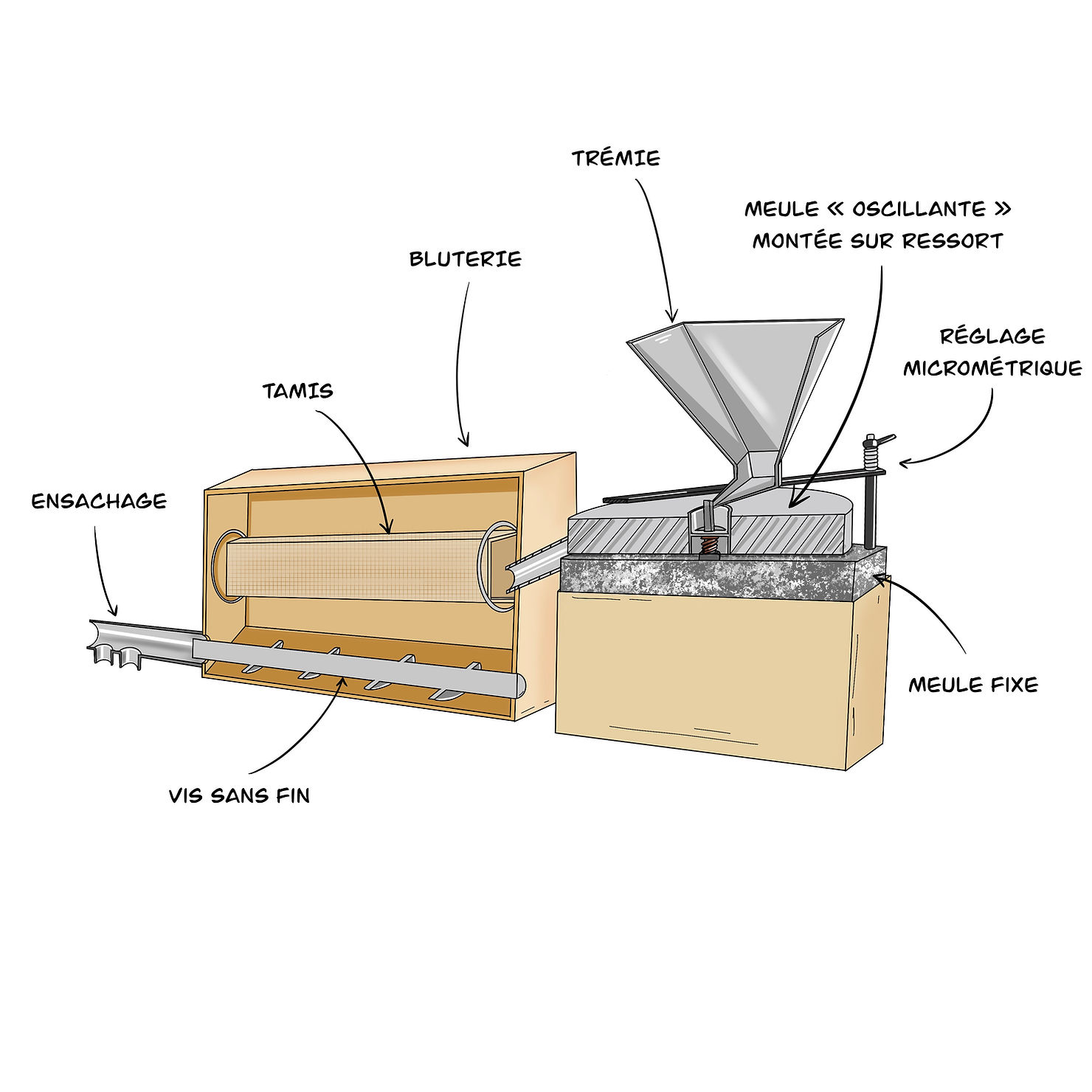If you only have 3 minutes to read this article, we’ll give you a pictorial summary. 3 things to remember for 10-15 tonnes of wheat
- You are a cereal grower: make the most of your investment in around 12 months
- You are a miller: make your investment pay off in around 12 months
- If you are a farmer-baker: your investment will pay for itself in less than 8 months

Here are a few indications of flour prices in 2021:
Organic T80 flour in 1 kilo (sold in Biocoop), made on Moulins à Cylindres
Markal-type flour
2.10€ to 2.30€ per kilo
Flour Millstones
3€ per kilo or more if it’s an old wheat
Sale Mill Astrié type T80
2 per kilo or more direct to the consumer
Between €1.40 and €1.60 per kilo to retailers, who therefore make a margin.
Rye, buckwheat and rice flour :
Less demand means less production, less competition
2.50€ to 3€ per kilo depending on packaging and seed quality
Small spelt flour
Small pack sizes generally
4.50 to 6€ per kilo from retailers for sale to private individuals
Generally, retailers will take a margin of around 30% on the resale of your product.
The price of organic wheat :
0.40 to €0.60 per kilo.
So by reselling, we achieve a coefficient of 3 or even 4.
Profitability for cereal farmers: how do you calculate it?
Growing wheat, the costs
If we assume that a hectare costs us a total of €800 per hectare
The first variable will be the harvest yield:
- if you harvest 2 tonnes, the cost is €400 per tonne, or 40 cents per kilo.
- if you harvest 4 tonnes, the cost is €200 per tonne, or 20 cents per kilo.
So we have to forecast the cost per hectare and the possible harvest.
Selling wheat:
we can hope to sell 600 euros a tonne, or 60 centimes a kilo, so we can break even or earn 400 euros gross margin per hectare.
In this example, the sale of wheat yields a gross margin of €400 per hectare.
Compared with the investment in time and energy, this is not ‘profitable’.
Sale of flour:
If we harvest 2 tonnes of wheat, that’s 1.600 tonnes of flour.
Let’s imagine, at the lowest price, that we resell at €1.40 via a reseller.
That’s €2,240 per hectare in sales.
In the end: €2,240 (figure) – €800 (costs) = €1,440 margin per hectare.
In the same example, the sale of flour generates a gross margin of €1,400 per hectare.
Between the selling price of the wheat and the selling price of the flour, we’re looking at a coefficient of 3 or more.
Improving yields will increase margins.
To be taken into account:
- This creates a new profession: that of selling and marketing.
- You spend less time at work and you can grow.
Profitability for a baker: how do you calculate it?
The cost of wheat
This costs you 800 euros per hectare of wheat.
Let’s take the example of a harvest on poor land: you harvest 2 tonnes of wheat
With 2 tonnes of wheat + water + loss during cooking: you will make around 2 tonnes of bread.
Reselling bread
If we make a basic brown bread sold at €4 per kilo
We make €8,000 in sales
8,000€ in sales – 800€ in costs = 7200€ gross margin
The sale of brown bread with flour from his own mill generates a gross margin of €7,200 per hectare for the farmer-baker.
To be taken into account:
- Bread-making
- Time spent selling in the shop
In a nutshell: from cereal grower to baker

How long will it take to make the mill profitable?
From 5 tonnes of wheat per year, the Astreia mill pays for itself in less than 2 years.



